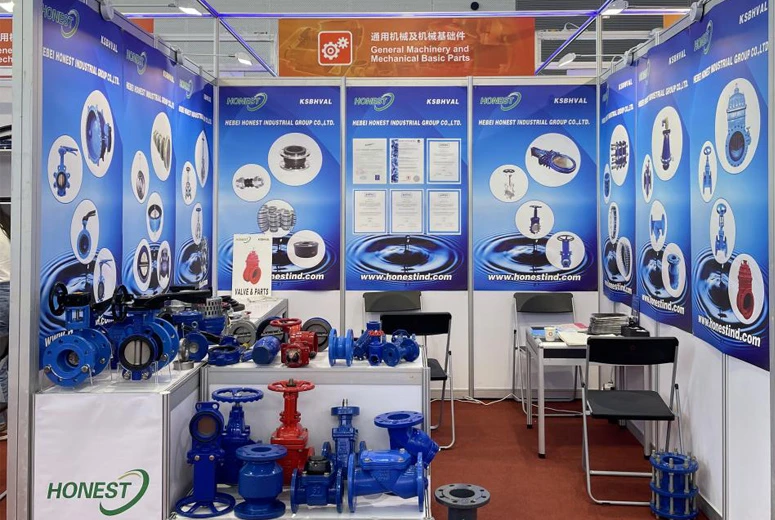12 月 . 03, 2024 18:22 Back to list
actuated valve
Understanding Actuated Valves A Key Component in Modern Automation
In the realm of industrial automation and control systems, actuated valves play a critical role in managing fluid flow across various processes. These valves are an essential part of modern engineering, providing precision control over liquid and gas movement in pipelines, thereby contributing to the efficiency and safety of operations in numerous sectors, including oil and gas, water treatment, pharmaceuticals, and food processing.
What is an Actuated Valve?
An actuated valve is a valve equipped with an actuator, which is a device that converts energy into mechanical motion. The actuator allows for automatic control of the valve's opening and closing mechanisms, enabling real-time response to the system's demands. There are various types of actuators used in conjunction with valves, including electric, pneumatic, and hydraulic actuators. Each type has its advantages, depending on the specific application and environment.
Types of Actuators
1. Electric Actuators These use electrical energy to operate the valve. They are known for their high precision and ease of integration with electronic control systems. Electric actuators are often the preferred choice in settings where consistent performance is critical, and they offer the convenience of remote operation through control panels or computers.
2. Pneumatic Actuators Utilizing compressed air to actuate the valve, pneumatic actuators are preferred in applications requiring rapid movement. They are instrumental in industries where speed is crucial, such as in food and beverage manufacturing, where processes must be efficient to avoid spoilage and waste.
3. Hydraulic Actuators These actuators use pressurized fluid to create motion. They are particularly effective in applications requiring high force or torque, such as in heavy manufacturing and power generation. Hydraulic actuators are robust and can operate in harsh environments, making them suitable for demanding industrial conditions.
Applications of Actuated Valves
Actuated valves are ubiquitous in various applications. In oil and gas, they control the flow rates and pressures in pipelines, ensuring safe transport of hydrocarbons. In water treatment facilities, they regulate the flow of water and chemicals, which is vital for maintaining quality standards. In pharmaceutical manufacturing, actuated valves manage the precise flow of raw materials and products, adhering to stringent safety regulations.
actuated valve

In addition to their use in process industries, actuated valves also find applications in HVAC (Heating, Ventilation, and Air Conditioning) systems. They play a significant role in maintaining the desired temperature and airflow in buildings, contributing to energy efficiency and comfort.
Benefits of Using Actuated Valves
The integration of actuated valves into various processes brings numerous advantages. First, they enhance operational efficiency by allowing for automation, which reduces the need for manual intervention. This not only saves time but also minimizes the risk of human error.
Second, actuated valves provide consistent control over process variables. By enabling precise adjustments to flow rates and pressures, they help maintain optimal operating conditions, which is crucial for both safety and product quality.
Third, they enhance safety in operations. In hazardous environments, the ability to control valves remotely can significantly reduce risks associated with manual valve handling. Automated systems can quickly respond to alarms or process changes, allowing for immediate action to be taken in case of anomalies.
Challenges and Considerations
While there are numerous benefits to using actuated valves, there are also challenges that need to be considered. Selection of the right actuator type and valve material is crucial to ensure compatibility with the specific fluids and operating conditions. Additionally, proper maintenance is required to prevent failures, which can lead to costly downtime and repairs.
Conclusion
Actuated valves serve as a backbone to modern automation systems, providing essential control over fluid flow across various industries. By leveraging the benefits of different actuator types, industries can enhance efficiency, safety, and precision in their operations. As technology continues to evolve, the importance of actuated valves will only increase, solidifying their role as indispensable components in the future of industrial automation.
Share
-
Understanding the Differences Between Wafer Type Butterfly Valve and Lugged Butterfly ValveNewsOct.25,2024
-
The Efficiency of Wafer Type Butterfly Valve and Lugged Butterfly ValveNewsOct.25,2024
-
The Ultimate Guide to Industrial Swing Check Valve: Performance, Installation, and MaintenanceNewsOct.25,2024
-
Superior Performance with Industrial Swing Check Valve: The Essential Valve for Any SystemNewsOct.25,2024
-
Industrial Swing Check Valve: The Ideal Solution for Flow ControlNewsOct.25,2024
-
You Need to Know About Industrial Swing Check Valve: Functionality, Scope, and PerformanceNewsOct.25,2024